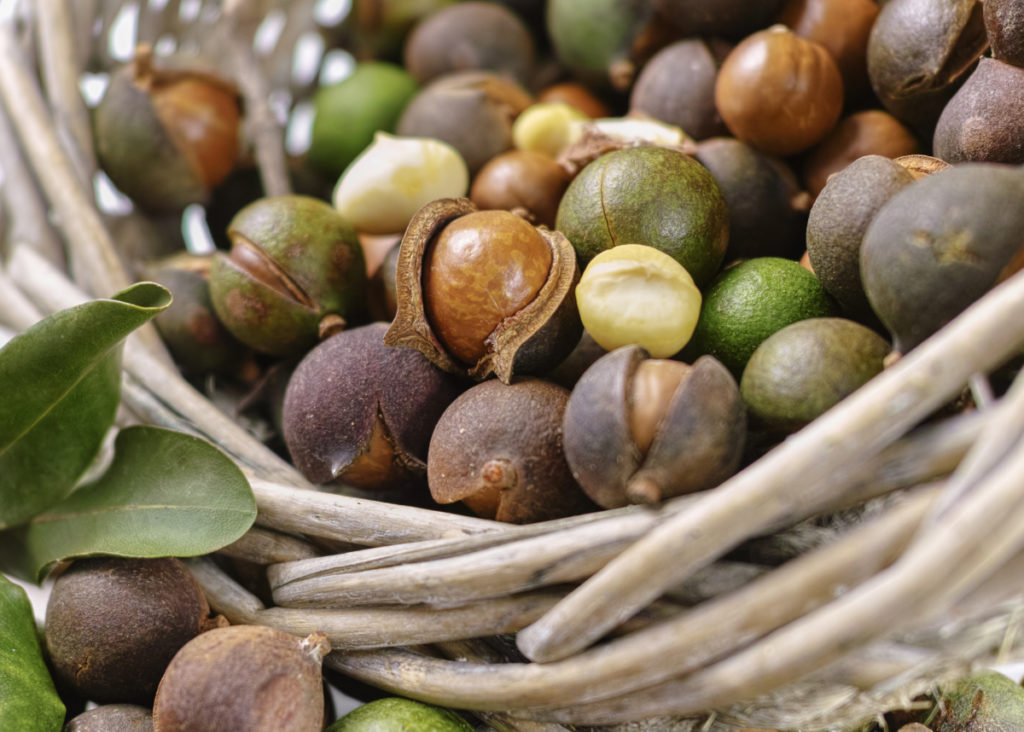
This year’s Macadamias Australia crop from Bundaberg is expected to be on par with last year despite drought conditions taking their toll across the country.
Macadamias Australia Director Trevor Steinhardt said he wasn’t sure how it happened, but it was good news as their 2020 Bundaberg crop was likely to be the same as or slightly better than 2019.
Trevor said macadamia producers in other areas, where the crops were down, may have been unirrigated and the lack of rain had taken its toll.
“The Northern Rivers, Gympie and Glasshouse regions are down a bit,” Mr Steinhardt said.
“Bundaberg is likely to be the same as 2019 or better, somehow we got through it. I would say Bundaberg in fact could be up, but we won’t know until we count them in the box.”
Mr Steinhardt said the recent rain was great news across the industry as it would help farms recover, ready for next year’s crop.
“It has set the trees up perfectly to gain a good crop for 21,” he said.
“Tree health in the area is unbelievable and a lot of new trees continue to come in to production with a seven-year growth, of 2500 trees in Bundaberg year-on-year.”
Last week Macadamias Australia started its annual harvest and will continue to harvest until the end of August.
Other macadamia crops affected by drought
Earlier this week Australia Macadamia Society forecast the 2020 Australian macadamia crop had been affected by drought and was forecast to reach 36,500 tonnes in-shell at 3.5 per cent moisture (39,000 tonnes at 10 per cent moisture).
Australia Macadamia Society stated it would be the second consecutive macadamia crop impacted by the unprecedented dry conditions, after the 2019 crop fell short at 43,500 tonnes at 3.5 per cent moisture (46,600 tonnes at 10 per cent moisture).
Australia Macadamia Society CEO Jolyon Burnett said all growing regions have been impacted, but Mr Steinhardt reaffirmed that Macadamias Australia’s Bundaberg yield had not been greatly impacted.
“2019 was the hottest and driest year in recorded Australian history. Our largest producing region of Bundaberg had its driest ever year on record, and Lismore in the Northern Rivers (our second largest producing region) had its driest spell since 1903,” Mr Burnett said.
“Irrigation in Bundaberg made the conditions easier to manage but placed pressure on water availability. However non-irrigated regions were unable to mitigate for the conditions.”
Mr Burnett added that substantial recent rainfall in all growing regions had helped to ease the extreme conditions.
“There is visible improvement to orchard soil and tree health. Growers are continuing to focus on improving their orchard floor management, which is integral to managing soil moisture,” he said.
Mr Burnett said the Australian macadamia industry continues to remain focused on both improving productivity and investing in innovative global marketing.
“An exciting new two-year marketing campaign will commence in mid-2020 and feature new consumer campaigns plus new market research that will explore opportunity areas for macadamias.”
The 2020 macadamia harvest has begun in Bundaberg and will commence in all other growing regions in the coming weeks, ending in August/September.
- Other news: Macadamias Australia crack Chinese and online markets
- Ettie and Dorrie tea inspired by bygone era
- Totally Flipt bouncing into Bundaberg





Macadamias Australia building a new 8000 sq metre facility adds great confidence to the Bundaberg region.